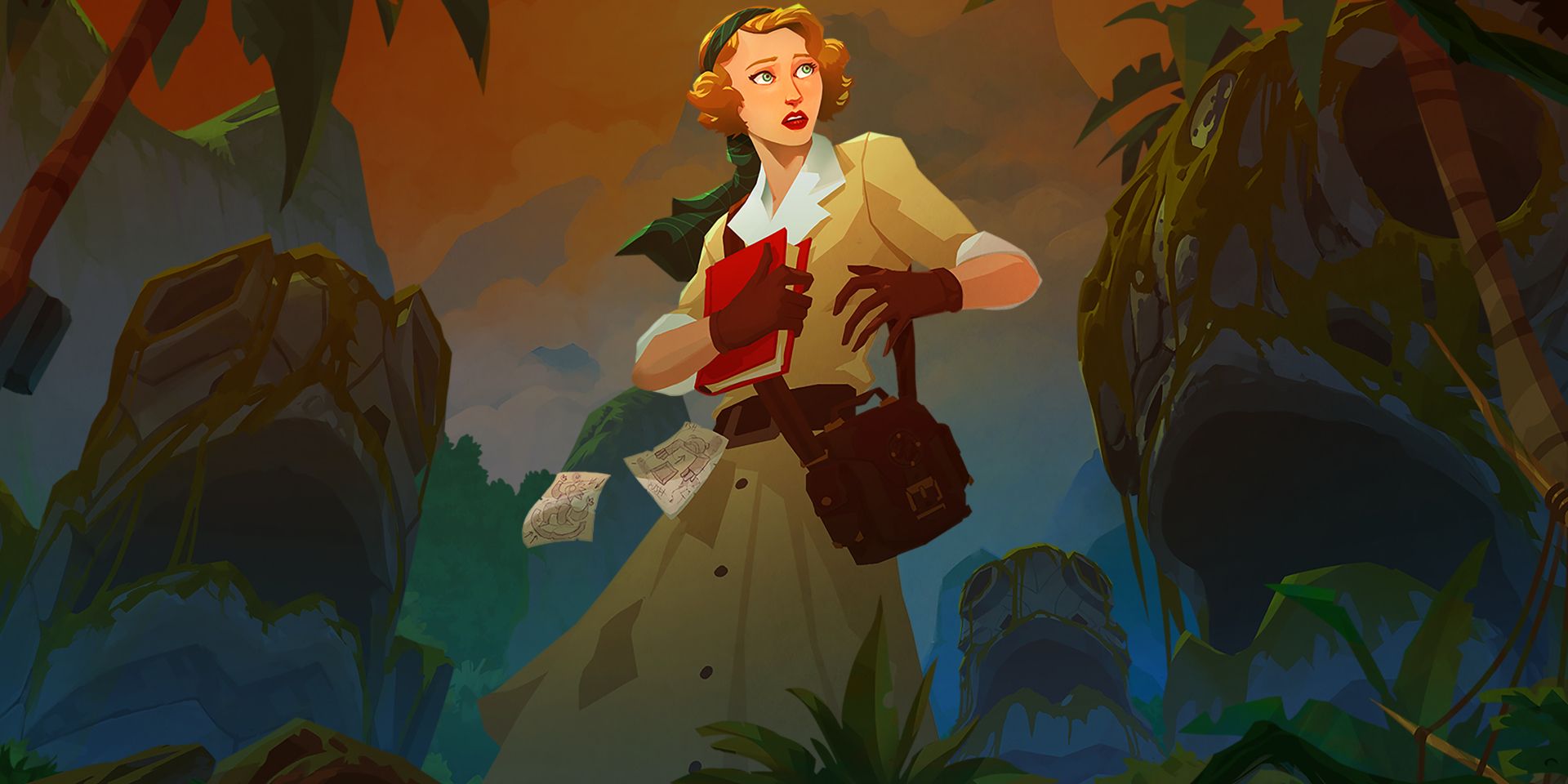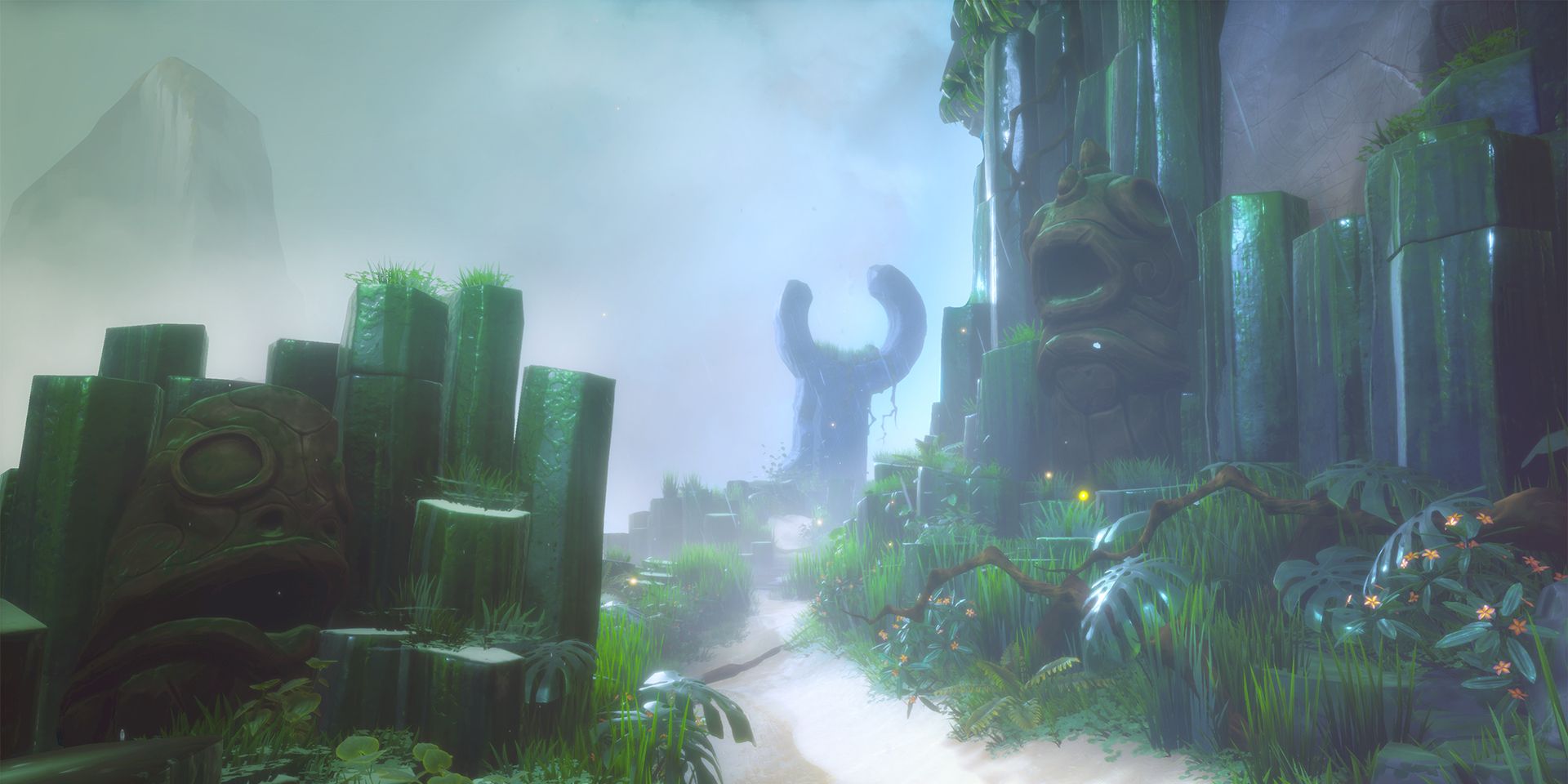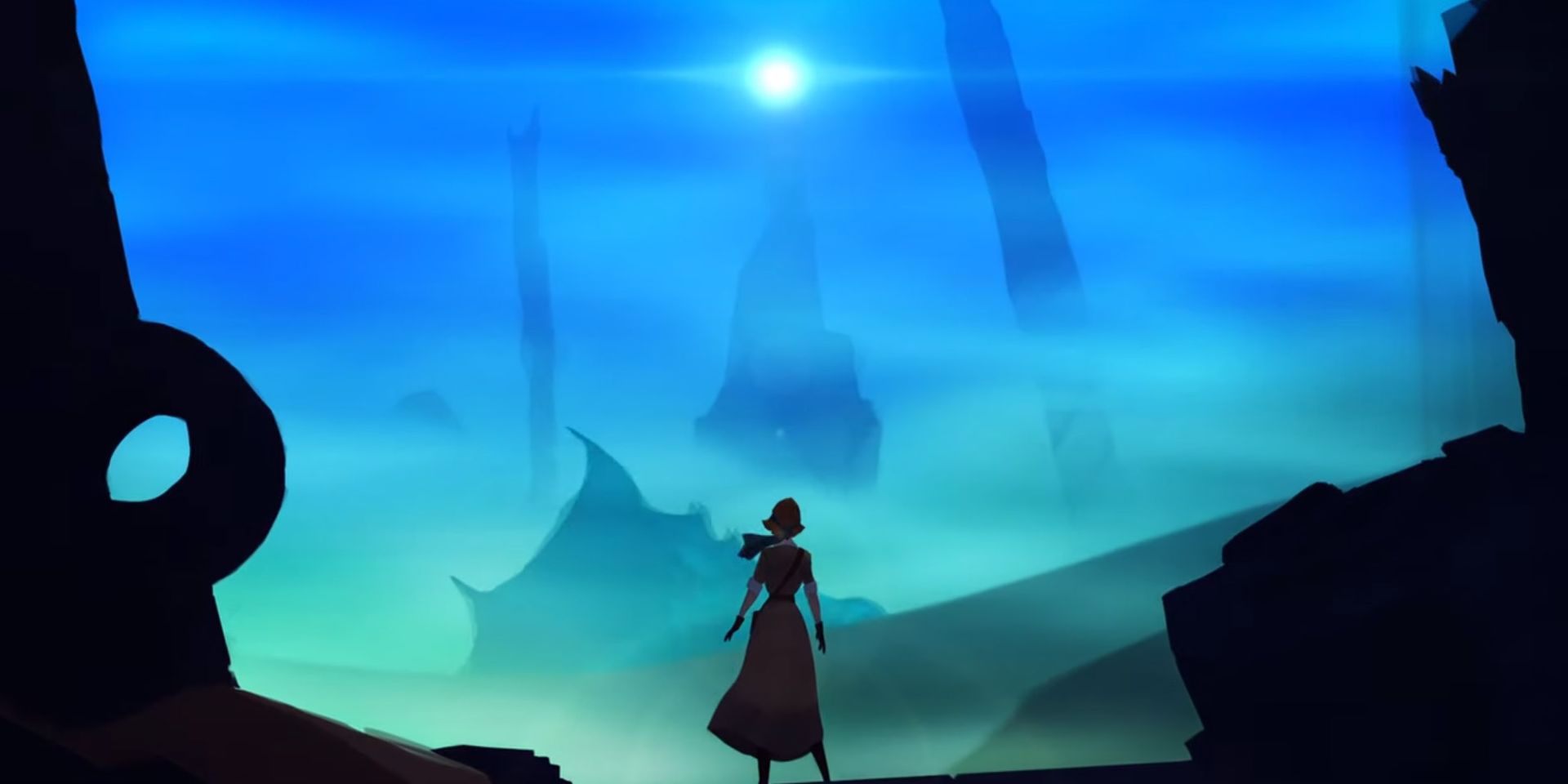The upcoming adventure/exploration game, Call Of The Sea, takes many cues from the horror stories of Howard Philips Lovecraft – its early 20th century setting, supernatural mysteries, weird deep-sea life, and hints of a vast, alien cosmos where humanity is small and insignificant. While Lovecraft painted this otherworldly phenomena as a horrifying reason to despair and go insane, Call Of The Sea portrays Norah's quest to find her missing husband in the South Pacific as a positive experience, one where fear of the other can be conquered through understanding and a willingness to accept the truth.
In the premier trailer for Call Of The Sea, Norah, the protagonist of this puzzle adventure game, voices thoughts about her search to find her husband, Harry, who vanished on an ocean expedition several years ago. Her long journey in-game has led her to an island in the South Pacific, a beautifully-rendered paradise of tropical vegetation, sparkling waterfalls, and carved stone statues of wide-lipped fish people. As Norah muses over footage of shipwrecked ocean liners, strange ruins, and uncanny aquatic creatures, she expresses fear over the mysterious call that drives her onward, balanced by a guarded elation at how her quest for the truth has helped her "find her strength again."
The measured optimism of Call Of The Sea, going by developer comments, is meant to go against the mood usually seen in the horror stories of Howard Philips Lovecraft, a reclusive New England horror writer whose Cthulhu Mythos and Dream Cycle series of stories pioneered the sub-genre of Cosmic Horror, in which there are multi-dimensional aliens with too many tentacles, blasphemous cults use magic to invoke inhuman gods, and protagonists who glimpse the true nature of the vast, uncaring cosmos go insane. While being huge fans of Lovecraftian horror stories, the designers of Call Of The Sea wanted to tell a different, more optimistic story in their game – one that rejects the genre stereotype of "investigators from the 1920s shooting their Thompson's at disgusting creatures with tentacles."
Call Of The Sea's Plot May Be More Optimistic Than Call Of Cthulhu
The plot of Call Of The Sea, by all accounts, appears to homage two stories from the work of H.P. Lovecraft. The first, The Call Of Cthulhu, is about a scholar who tracks down various written accounts of Cthulhu, an ancient, alien god with dragon wings and an octopus head, worshiped by various sinister cults across the world and seen in the dreams of artists and madmen. The final account the scholar discovers is from the sole survivor of a Norwegian steamboat crew who discovered an island with a geometrically twisted city and accidentally unleashed Cthulhu himself from his tomb, Godzilla-style.
The second Lovecraft story, a later work called The Shadow Over Innsmouth, is about a sight-seeing narrator named Robert Olmstead who gets trapped after sundown in the village of Innsmouth, a decrepit fishing community whose inhabitants have cross-breed with a race of fish people living in civilizations deep beneath the ocean. The narrator barely manages to escape the town and mobs of hopping fish people in the streets, but a few years later, discovers that he's descended from the founder of Innsmouth, and is slowly transforming into a fish-person himself.
Call Of The Sea, like The Call Of Cthulhu, features mysterious ancient ruins and a protagonist pursuing strange visions in the deep sea. Like The Shadow Over Innsmouth, the trailer for Call Of The Sea showcases visual evidence of island-based human civilizations interacting with civilizations from beneath the sea. Indeed, going by the ending scene of a pair of webbed hands, the game protagonist might transform into a fish person near the climax of the game.
The difference between these two franchise lies in how story protagonists react to the secrets revealed in their main narratives. For Howard Philip Lovecraft, the knowledge of beings larger, slimier, and far more ancient than the human race was a cause for despair and a good reason to go insane. In contrast, the developers of Call Of The Sea, in their own words, have set out to make their story about "a rise to sanity," where Norah's encounters with mysterious ruins and ancient ocean-dwelling beings help her mature and become a better version of herself.
Call Of The Sea Will Reject the Prejudice Underlying Lovecraft's Stories
An important point of order: Howard Philips Lovecraft, even by the standards of the time, was horrendously racist, displaying disgust, distrust, and fervent hatred towards anything and anyone who wasn't a white upper-class New England gentleman. This fear of anything and everything not like him infuses every one of Lovecraft's most famous stories, with his viewpoint narrators being horrified at non-western cultural practices and miscegenation just as much as they are at rampaging tentacle monsters.
It's perhaps the greatest testament to Lovecraft's creativity that many famous African-American creatives have engaged with his horror stories despite his virulent racism. TV shows and literary works like Lovecraft Country or The Ballad Of Black Tom try to retell Lovecraft-style stories from the perspective of African-Americans and other perspectives Lovecraft ignored, while Call Of The Sea, going by the gameplay footage and developer comments, will pursue a storyline similar to The Shape of Water, in which the uncanny fish-people from the sea are not horrors to be shunned, but people Norah can empathize with and understand. This theme of accepting and seeking to understand the unknown is borne out by the peaceful puzzle-solving mechanics of the games, plus the colorful beautiful landscapes seen in the gameplay footage, which make the unknown and unfamiliar secrets in this game a little less frightening.



